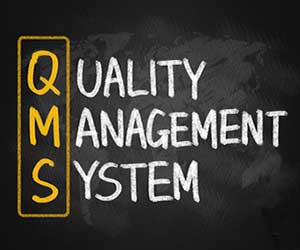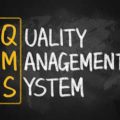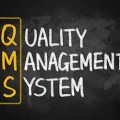
For engineers like me, quality is a big deal. Industry standard quality control dictates that most documents and designs require a “second stamp” i.e. a reviewer who takes as much responsibility as the designer. If non-engineering professions followed this practice, many project quality issues would be solved.
The Project Management Body of Knowledge (PMBOK) values project quality so highly that it is one of its core knowledge areas. Project Quality Management is defined as:
PMBOK, 5th Edition, Section 8, “Project Quality Management”
Project Quality Management includes the processes and activities of the performing organization that determine quality policies, objectives, and responsibilities so that the project will satisfy the needs for which is was undertaken.
The knowledge area contains three processes:
- Plan Quality Management
The process of identifying quality requirements andéor standards for the project and its deliverables and documenting how the project will demonstrate compliance with quality requirements and/or standards. - Perform Quality Assurance
The process of auditing the quality requirements and the results from quality control measurements to ensure that appropriate quality standards and operational definitions are used. - Control Quality
The process of monitoring and recording results of executing the quality activities to assess performance and recommend necessary changes.
Plan Quality
As a component of the project management plan, the Plan Quality Management process involves the production of a Quality Management Plan. This plan specifies the project’s quality requirements as well as how they will be measured and controlled.
The stakeholder list is a fantastic starting point for determining quality requirements. Each stakeholder imposes requirements onto the project, and each requirement has a standard of quality associated with it.
Quality standards generally fall into the following categories:
- Internal company standards
- Those imposed by regulatory agencies
- Legal standard of care to the public (or simply, public expectations)
- External standards imposed by the project sponsor or organization
- Other stakeholder standards, like utilities, adjacent landowners, and other affected organizations
Quality Management Plan
The quality management plan should contain:
- A list of standards that apply to the project
- Measurement criteria and frequency
- Inspection criteria
Quality Certification
The ISO-9001 standard provides a way for organizations to achieve and maintain certification of a quality management program. It is focused on the quality management system, not individual technical standards for a company’s products.
Certification for individual quality practitioners can be obtained through the American Society for Quality (ASQ) and the SME (formerly the Society of Manufacturing Engineers).
Six sigma is a popular certification for individual practitioners which was popularized by General Electric in the 1990’s. It involves the statistical analysis of the outputs of a process and limitation of defects to a maximum acceptable standard.
Technical Standards
Technical standards are available in almost any industry, which can be used to judge the quality of individual project deliverables. These are generally available by country.
- United States: American National Standards Association (ANSI)
- India: Bureau of Indian Standards (BIS)
- China: Standardization Administration of China (SAC)
The global organization of these standards organizations is called the Internation Organization for Standards (ISO), based in Geneva, Switzerland. There are 164 member countries.
Also, many industries have universal (global) standards bodies which develop standards specific to an industry. These are often, but not always, more detailed and thus useful.
- American Society for Testing and Materials (ASTM): Standards for the construction industry, and used throughout the world in spite of its “American” name.
- Institute of Electrical and Electronics Engineers (IEEE): Standards forthe electronics and technology industries.
- Society of Automotive Engineers (SAE): Standards for the automobile industry.
This is not an exhaustive list as there are many others for all types of industries.
Perform Quality Assurance
Performing quality assurance ensures that the processes are in place to produce the project deliverables at the applicable level of quality. In the Project Management Body of Knowledge, Quality Assurance is part of the Executing process group and is therefore performed throughout the duration of the project.
When quality assurance activities identify a quality problem which leads to project changes, the project management plan may need to be updated.
A project manager might investigate a quality problem, such as “the legs of the couch are prone to break during shipping” and make changes to the production process. Whether the solution is to strengthen the legs, change the location within the package, change the shipping methods, or some other solution, the work that is involved falls under the category of quality assurance. Throughout the development project the project manager must perform “quality audits” which range from basic internal inspections to external consultant audits, with the goal of identifying the major quality issues.
Quality Assurance asks the following questions:
- What are the applicable quality standards?
- How will quality be measured?
- Who will measure it?
- What will be measured? (i.e. How many units? Which types? Which processes?)
- When will it be measured?
- What is the criteria for rejection?
Perform Quality Control
Controlling the quality of a project’s deliverables can be the silver bullet that makes everything else feel easy. Unfortunately, it’s often easier said than done but there are tried and true techniques that help you get there.
On the flip side, a single poor quality deliverable can create a cycle of low performance, whereby an environment is created where quality is not valued and people then do not put in the extra effort to produce top quality products.
In the PMBOK, Control Quality falls under the Monitoring & Controlling process group.
Quality Control vs. Quality Assurance
This distinction is commonly misunderstood. Quality Control, often abbreviated QC, is the measurement of outputs to determine whether they meet the accepted criteria. Quality Assurance, often abbreviated QA, on the other hand analyzes the processes and systems that are producing the outputs. If you’re measuring the systems, it’s QA. If you’re measuring the outputs, it’s QC.
Measuring Outputs
Quality criteria should have been identified during the planning phase (PMBOK: Plan Quality Management) for each project deliverable.
When project deliverables are produced, they are subjected to quality control before they are delivered to their end user. That means they need to be measured and compared against the standard that’s been identified in the project management plan. If you don’t know the quality of your outputs, you cannot make effective decisions.
Sometimes outputs are singular in nature, like a project report, which doesn’t lend itself well to quantitative measurement against a standard. But there are always quality standards that apply, for example when the reader of the report notices technical errors or excessive spelling mistakes it is clear that they are applying a quality standard to the work. Ask yourself, then, what is required to meet this standard. For example, the project management plan could identify things like expert review, grammatical review, management review, and the like. When the review is done, quality control has been completed.
Examples of quality control include:
- Inspection of products leaving the production line.
- Expert technical review of reports.
- Trial runs prior to plant commissioning.






